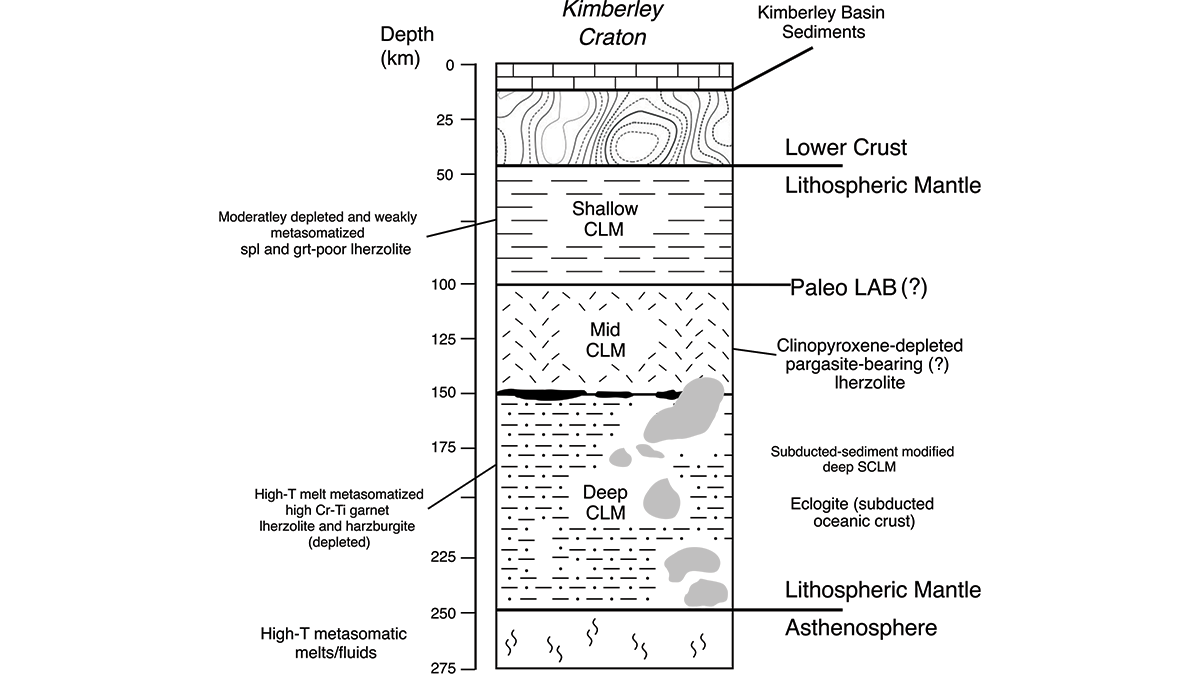Editors’ Highlights are summaries of recent papers by AGU’s journal editors.
Source: Geochemistry, Geophysics, Geosystems
The Kimberley Craton in Western Australia is a classic locality for kimberlite (coincidentally named for a different place called Kimberley, in South Africa), a mantle-derived igneous rock famous for delivering diamonds from the mantle lithosphere to near the surface where they can be mined. This ancient core of the Australian continent is also an excellent example of the long-lived and stable continental structures that survive the abuses of plate tectonics for billions of years.
Sudholz et al. [2023] provide a comprehensive dataset of compositions of mantle-derived minerals from kimberlites scattered across the Craton and through time. Their analysis of the pressure-temperature conditions and geochemical characteristics recorded by each pyroxene and garnet crystal enables a reconstruction of the layered composition and structure of the Craton through time. This reveals the thickness, geothermal gradient, and history of melt extraction or addition from each layer of the mantle lithosphere.
Citation Sudholz, Z. J., Jaques, A. L., Yaxley, G. M., Taylor, W. R., Czarnota, K., Haynes, M. W., et al. (2023). Mapping the structure and metasomatic enrichment of the lithospheric mantle beneath the Kimberley Craton, Western Australia. Geochemistry, Geophysics, Geosystems, 24, e2023GC011040. https://doi.org/10.1029/2023GC011040
—Paul Asimow, Editor, G-Cubed
Correction, 26 October 2023: The first sentence of the text was revised to better classify the Kimberley Craton.

